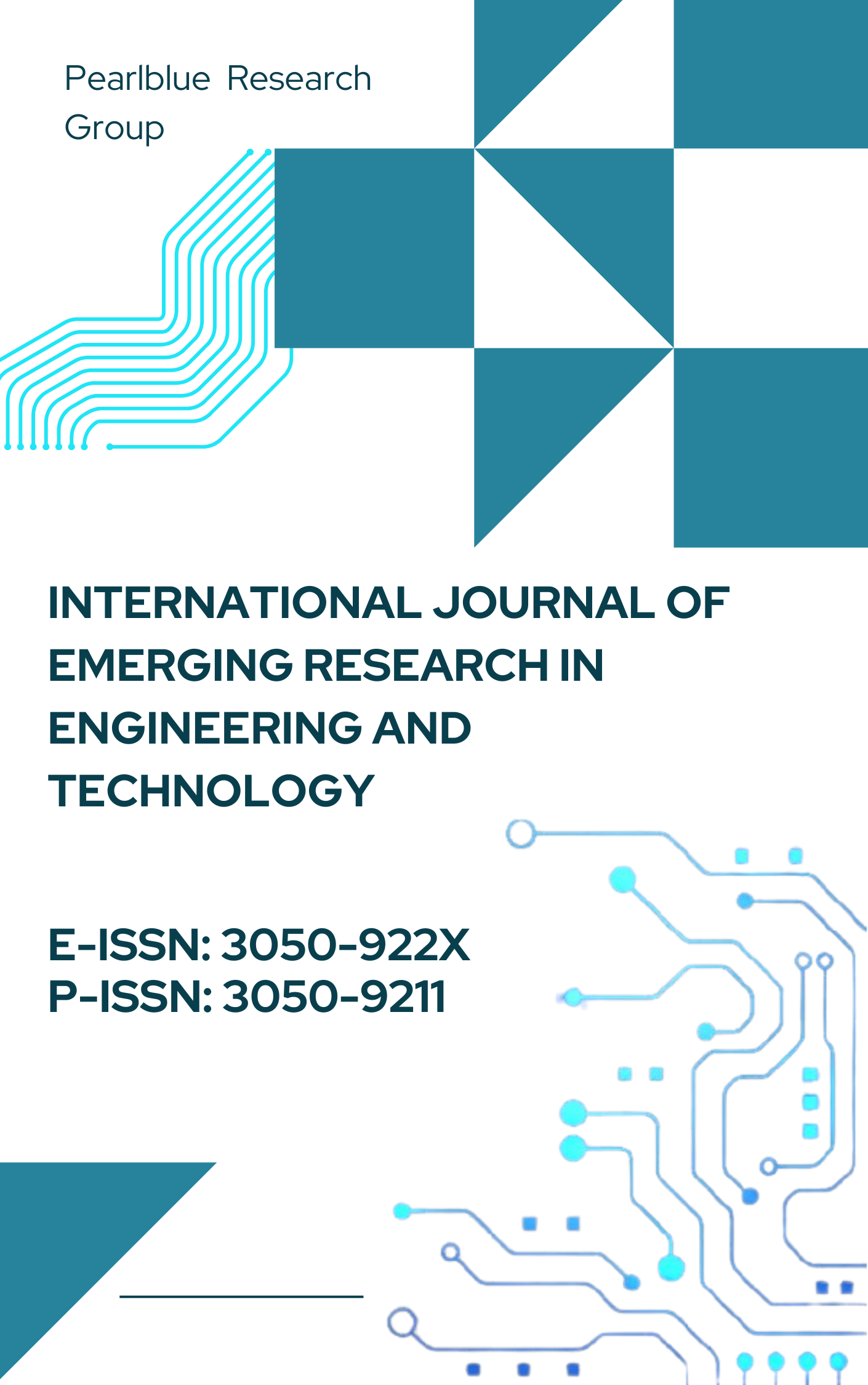Vehicle and Property Loss Assessment with AI: Automating Damage Estimations in Claims
DOI:
https://doi.org/10.63282/3050-922X.IJERET-V1I4P105Keywords:
Damage Assessment, Artificial Intelligence, Convolutional Neural Networks, Vehicle Insurance, Property Claims, Machine LearningAbstract
The conventional method used to determine the amount of losses on property and cars is tedious, less objective, and is generally quite error-prone or can be easily manipulated. As Artificial Intelligence (AI) continues to be more widely adopted, a significant movement towards automating damage estimation has emerged. This paper examines AI-powered solutions for assessing damages in the insurance market, with a specific focus on vehicle and property claims. These include the investigation of computer vision, deep learning models, and machine learning tools to facilitate loss assessing through images. The paper includes a comprehensive literature review that can be studied in relation to the history of automated damage estimation development. The approach to assessing the level of damage is suggested based on a methodological framework that consists of Convolutional Neural Networks (CNN), regression algorithms, and rule-based classification. We perform experimentation on the benchmark data to validate the effectiveness of the proposed system on benchmark datasets, as well as real-world insurance claim images. Our findings show that it is highly accurate, with a shorter processing time compared to manual assessments. Based on the analysis of the results, we discuss the prospects, limitations, and future direction of AI implementation in insurance claims. This automation not only makes the process but also makes it more obvious
References
[1] Shi, J., & Malik, J. (2000). Normalized cuts and image segmentation. IEEE Transactions on pattern analysis and machine intelligence, 22(8), 888-905.
[2] Simonyan, K., & Zisserman, A. (2014). Very deep convolutional networks for large-scale image recognition. arXiv preprint arXiv:1409.1556.
[3] Szegedy, C., Liu, W., Jia, Y., Sermanet, P., Reed, S., Anguelov, D., ... & Rabinovich, A. (2015). Going deeper with convolutions. In Proceedings of the IEEE conference on computer vision and pattern recognition (pp. 1-9).
[4] Smola, A. J., & Schölkopf, B. (2004). A tutorial on support vector regression. Statistics and computing, 14(3), 199-222.
[5] Breiman, L. (2001). Random forests. Machine learning, 45(1), 5-32.
[6] Gerke, M., & Kerle, N. (2011). Automatic structural seismic damage assessment with airborne oblique Pictometry© imagery. Photogrammetric Engineering & Remote Sensing, 77(9), 885-898.
[7] Cordts, M., Omran, M., Ramos, S., Rehfeld, T., Enzweiler, M., Benenson, R., ... & Schiele, B. (2016). The cityscapes dataset for semantic urban scene understanding. In Proceedings of the IEEE conference on computer vision and pattern recognition (pp. 3213-3223).
[8] Krizhevsky, A., Sutskever, I., & Hinton, G. E. (2012). Imagenet classification with deep convolutional neural networks. Advances in Neural Information Processing Systems, 25.
[9] Lin, T. Y., Maire, M., Belongie, S., Hays, J., Perona, P., Ramanan, D., ... & Zitnick, C. L. (2014, September). Microsoft Coco: Common objects in context. In European Conference on Computer Vision (pp. 740-755). Cham: Springer International Publishing.
[10] Pandiri, L. (2019). Leveraging Deep Learning for Automated Damage Assessment in Condo and RV Insurance. Global Research Development (GRD) ISSN: 2455-5703, 4(12).
[11] Riikkinen, M., Saarijärvi, H., Sarlin, P., & Lähteenmäki, I. (2018). Using artificial intelligence to create value in insurance. International Journal of Bank Marketing, 36(6), 1145-1168.
[12] Dhieb, N., Ghazzai, H., Besbes, H., & Massoud, Y. A very deep transfer learning model for vehicle damage detection and localization — 31st International Conference on Microelectronics (ICM), 2019. Explores transfer learning for accurate localization of vehicle damage.
[13] Ijjina, E. P., Chand, D., Gupta, S., & Goutham, K. (2019, July). Computer vision-based accident detection in traffic surveillance. In 2019, the 10th International Conference on Computing, Communication and Networking Technologies (ICCCNT) (pp. 1-6). IEEE.
[14] Modarres, C., Astorga, N., Droguett, E. L., & Meruane, V. (2018). Convolutional neural networks for automated damage recognition and damage type identification. Structural Control and Health Monitoring, 25(10), e2230.
[15] Rawat, W., & Wang, Z. (2017). Deep convolutional neural networks for image classification: A comprehensive review. Neural computation, 29(9), 2352-2449.’
[16] Okoh, P., & Haugen, S. (2013). Maintenance-related major accidents: classification of causes and case study. Journal of Loss Prevention in the Process Industries, 26(6), 1060-1070.
[17] Sonka, M., Hlavac, V., & Boyle, R. (1993). Image pre-processing. In Image processing, analysis and machine vision (pp. 56-111). Boston, MA: Springer US.
[18] Fan, K., Pei, Q., Mo, W., Zhao, X., & Sun, Q. (2006, June). An efficient automatic iris image acquisition and preprocessing system. In the 2006 International Conference on Mechatronics and Automation (pp. 1779-1784). IEEE.
[19] Gopalakrishnan, K., Gholami, H., Vidyadharan, A., Choudhary, A., & Agrawal, A. (2018). Crack damage detection in unmanned aerial vehicle images of civil infrastructure using a pre-trained deep learning model. Int. J. Traffic Transp. Eng, 8(1), 1-14.
[20] Chun, C., & Ryu, S. K. (2019). Road Surface Damage Detection Using Fully Convolutional Neural Networks and Semi-Supervised Learning. Sensors, 19(24), 5501.
[21] Patil, K., Kulkarni, M., Sriraman, A., & Karande, S. Deep learning based car damage classification — ICMLA, 2017. Early demonstration of CNNs applied to car damage classification.



